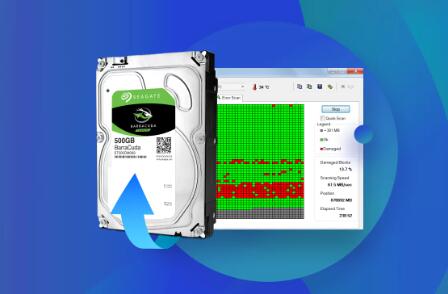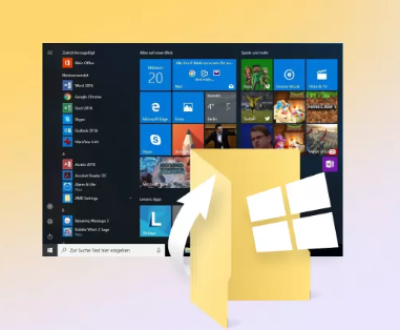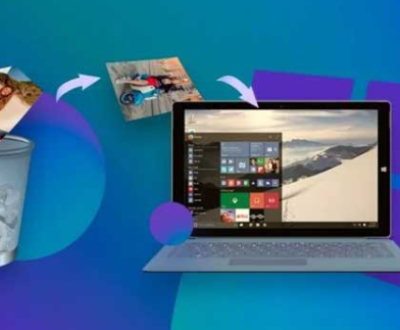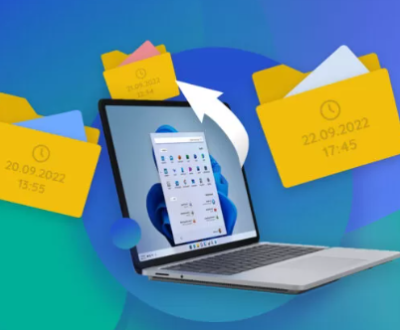Hard drives, both external and internal, are vital storage devices that hold valuable data for personal and professional use. However, despite their reliability, hard drives are susceptible to damage, whether from physical trauma, electrical failures, or logical issues. When a hard drive becomes damaged, recovering data from it can seem like an overwhelming task. But with the right approach, tools, and patience, you can often recover lost or inaccessible data.
1. Hard Drive Damage
Before you can successfully recover data from a damaged hard drive, it’s important to understand the types of damage that can affect a hard drive. There are two primary categories of damage:
a. Physical Damage
Physical damage occurs when the components inside the hard drive are damaged or broken. This can include:
Head crashes: The read/write heads inside the hard drive touch the disk platters, leading to physical damage.
Motor failure: The motor that controls the movement of the platters may stop working.
Electrical failure: A power surge or faulty power supply can fry the hard drive’s electronic components.
Mechanical failure: Mechanical parts like the actuator arm can become stuck or fail to function properly.

b. Logical Damage
Logical damage, on the other hand, refers to issues that prevent the hard drive from being accessed correctly, but the physical components are still intact. This can be caused by:
Corrupted file system: If the file system is damaged, the data may become inaccessible.
Accidental deletion: Files can be deleted either accidentally or through software errors.
Bad sectors: When the hard drive develops bad sectors, files stored in these areas may become corrupt or unreadable.
2. Initial Steps to Take After Hard Drive Damage
If your hard drive becomes damaged, it’s important to act quickly to maximize the chances of data recovery. Here’s what you should do:
a. Stop Using the Damaged Drive
If you notice any signs of hard drive failure (e.g., strange noises, failure to mount, slow performance), stop using the drive immediately. Continuing to use a failing hard drive increases the risk of further data loss, especially if the damage is physical. Every time you try to access or write data to the damaged drive, you may overwrite valuable data.
b. Check for Simple Solutions
Sometimes, the issue might not be as severe as it appears. Before diving into complex recovery techniques, try these basic troubleshooting steps:
Reconnect the cables: Ensure that the cables connecting the hard drive to the computer are secure and not damaged.
Try a different port: If you’re using an external hard drive, try connecting it to a different USB or SATA port.
Test on another computer: Test the hard drive on another computer to rule out issues with your current system.
c. Back Up Important Data (If Possible)
If you can still access the drive partially or intermittently, attempt to back up any critical data immediately. Even if the drive is acting up, you may still be able to copy essential files before the situation worsens.
3. Assessing the Severity of Damage
Once you’ve taken initial precautions, the next step is to assess the extent of the damage. Here’s how to determine whether the damage is physical or logical.
a. Physical Damage Indicators
If you hear grinding, clicking, or beeping noises from the hard drive, it is likely a sign of physical damage. Additionally, if the drive isn’t spinning at all or is not recognized by your computer, it may indicate a mechanical or electrical failure.
b. Logical Damage Indicators
If the drive is recognized by your computer, but you can’t access files or receive error messages like “Drive not formatted,” “Disk not recognized,” or “Corrupted file system,” the problem is likely logical. Similarly, if files are missing or corrupted, the problem could be with the file system or data structure.
4. Using Data Recovery Software for Logical Damage
For logical damage, data recovery software can often retrieve data without requiring physical intervention. These programs are designed to scan the damaged hard drive, identify missing or corrupted files, and attempt to restore them.
a. Popular Data Recovery Software
Panda Assistant is a comprehensive data recovery tool designed to help users retrieve lost or deleted files from various storage devices, including hard drives, SSDs, USB drives, and SD cards. Whether files have been accidentally deleted, lost due to formatting, or become inaccessible due to corruption, Panda Assistant offers a user-friendly interface to simplify the recovery process.
The software employs advanced scanning algorithms to locate and restore files in a variety of formats, including documents, photos, videos, and more. It also supports deep scans for more complex data recovery scenarios, ensuring that even hard-to-recover files have a higher chance of being restored. Panda Assistant is compatible with both Windows and Mac operating systems, providing a cross-platform solution for users in need of file retrieval assistance.
b. How to Use Data Recovery Software
Download and Install: Install the recovery software on a separate working computer (not the damaged drive).
Connect the Damaged Drive: Attach the damaged hard drive to your computer via a USB-to-SATA adapter or a hard drive enclosure.
Scan for Lost Files: Open the data recovery software, select the damaged drive, and choose the type of scan (quick or deep).
Preview and Recover: Once the scan is complete, preview the recoverable files and select which ones you want to restore. Save them to a different drive or external storage device.
5. When Physical Damage Occurs: Advanced Recovery Techniques
If your hard drive has sustained physical damage, it’s more challenging to recover the data on your own. However, there are still options you can consider.
a. Freezing the Hard Drive
One controversial technique is to place the damaged hard drive in a sealed plastic bag and freeze it for several hours. The idea behind this is that the cold can temporarily contract the metal components and reduce friction, allowing the drive to function long enough for you to recover data. This is a last-resort method and can sometimes work for a short period, but it’s not a guaranteed solution.
b. Using a Professional Data Recovery Service
If you’ve tried all available options and still cannot access your data, your best bet may be to turn to professional data recovery services. These companies have specialized clean rooms and tools to handle physically damaged drives and recover data. They can repair or replace damaged components such as the heads, motors, and circuit boards.
c. Choosing a Data Recovery Service
When selecting a professional recovery service, look for the following:
Reputation and Reviews: Choose a company with positive reviews and a strong reputation for successful data recovery.
No Recovery, No Fee: Many services operate on a “no recovery, no fee” basis, so you only pay if they can successfully retrieve your data.
Experience with Specific Hard Drive Models: If your hard drive is of a specific brand or model, ensure the service has experience with that type of drive.
6. Preventing Future Data Loss
Once you’ve successfully recovered your data, it’s essential to take steps to prevent future data loss. Regular backups are the best defense against data loss.
a. Regular Backups
Use cloud services (Google Drive, Dropbox, iCloud) and external hard drives to keep regular backups of important data. The 3-2-1 backup rule is an excellent strategy: 3 copies of your data, 2 on different storage devices, and 1 off-site or in the cloud.
b. Monitor Drive Health
Tools like CrystalDiskInfo or HD Tune can help monitor the health of your hard drive and alert you to potential issues before they cause complete failure.
c. Avoid Physical Damage
Handle your hard drive carefully, avoid dropping it, and protect it from extreme heat, moisture, and static electricity.
About us and this blog
Panda Assistant is built on the latest data recovery algorithms, ensuring that no file is too damaged, too lost, or too corrupted to be recovered.
Request a free quote
We believe that data recovery shouldn’t be a daunting task. That’s why we’ve designed Panda Assistant to be as easy to use as it is powerful. With a few clicks, you can initiate a scan, preview recoverable files, and restore your data all within a matter of minutes.
Subscribe to our newsletter!
More from our blog
See all postsRecent Posts
- How to restore deleted images 2025-06-30
- How to restore a deleted file on windows 2025-06-30
- is there any way to restore deleted photos 2025-06-30

 Try lt Free
Try lt Free Recovery success rate of up to
Recovery success rate of up to









